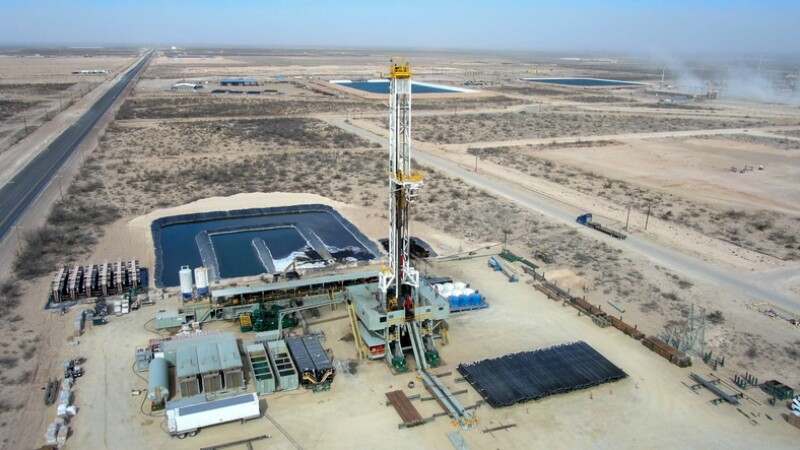This two-part article series in hydrofracturing is intended to give early-career petroleum engineers a comprehensive and accessible look into modern fracturing practices. The first part provided an overview of hydraulic fracturing operations and on-site activities of a fracturing engineer.
This second article details the essential roles and responsibilities of a procurement engineer, highlighting forecasting practices, supplier coordination, logistics management, and quality assurance activities that ensure continuous, efficient, and safe fracturing operations. Procurement and supply chain management play a vital role in ensuring that well stimulation activities proceed efficiently and productively.
This article is based on my personal experience in back-office functions supporting successful fracturing operations on the wellsite in the Permian Basin.
Key Components of Fracturing Procurement
A fracturing job consists of three major components: water, proppant, and chemicals. Accurate forecasting of proppant, chemicals, and consumables is the backbone of procurement operations, especially in high-intensity drilling environments like the Permian Basin.
Horizontal wells can consume between 10,000 and 15,000 tons of proppant each. When multiplied across multiwell pads and accelerated fracturing schedules, these numbers become enormous. Procurement teams collaborate closely with operations to forecast demand weeks ahead, securing supplies early to avoid delays. Real-time tracking of inventory and proactive replenishment helps minimize stockouts and ensure materials are always available.
Proppant
Supply: Proppant volumes vary widely, ranging from as little as 25 tons to over 10,000 tons per well. Mines located near the wellsite are generally preferred for proppants to minimize transit time, which is particularly critical in zipper fracturing operations where continuous supply is essential. Not all mines produce the specific type of proppant required, so aligning mine capabilities with the well design is crucial.
Logistics: Logistics play a key role, as carriers are responsible for transporting proppant efficiently from mines to the wellsite. The number of carriers needed is determined by the job size, and their operation must be coordinated closely to ensure smooth delivery throughout the stimulation process. Delivering 10,000 tons of fracturing sand to wellsites may require up to 400 truckloads. Specialized proppants often arrive by railcar and are transferred to loading facilities before transport.
Storage: On-site, proppant is typically stored in silos or sand boxes that feed directly to the blender.
Water Management
Supply: Water for fracturing operations will be fresh water, produced water, or a mix of both. Fresh water is usually from aquifers and reservoirs. Produced water will be from the wells nearby in the lease. Produced water is treated before transferring to water tanks in the wellsite.
Logistics: Water transfer plays an important role in hydraulic fracturing. For vertical wells, water is transported in water trucks and for horizontal multistage fracturing jobs, water is transferred through water transfer lines from the pit using water transfer pumps. For vertical jobs, water trucks should be contacted in advance to fill the water tanks before stimulation. For horizontal jobs, there will be water transfer units.
Storage: Water is stored in pits near the wellsite and is transferred through water transfer lines to fracturing tanks onsite. Depending on the scale of the job, between 10 and 15 fracturing tanks are typically deployed, allowing continuous transfer of water from the pit to the tanks during stimulation. For example, for one-stage vertical refracturing stimulation we need 1,500 bbl (4 fracturing tanks) and for 30-stage plug-and-perf stimulation we need close to 250,000 bbl of water (15 fracturing tanks) with continuous water flow from the pit.
Fracturing Chemicals
Supply: Fracturing fluids contain a variety of chemical additives including friction reducers, biocides, surfactants, and breakers. These chemicals are ordered based on the volumes specified in the design, delivered by suppliers, and tested upon arrival to ensure quality standards are met. Many frac fluid additives, such as gelling agents, crosslinkers, and corrosion inhibitors, require custom formulation for each well or stage. Suppliers need advance notice to source raw materials and prepare blends tailored to the operator’s stimulation program.
Logistics: For 1- to 3-stage stimulation job, chemicals are transported in flatbed trailers since the volume required is less. For multistage horizontal fracturing jobs, chemicals are transported in ISOs (international intermodal containers) to the wellsite. Chemical ISOs are notified in advance to secure transportation and to deliver on time for the rig-up.
Storage: Bulk chemicals are usually stored in ISO containers to avoid congestion at the site. Acid is received as raw, and then diluted to the desired percentage on wellsite, it is stored in acid tanks and delivered through acid transport.
Other Requirements
Fuels: Fracturing pumps require significant amounts of fuel, often diesel or natural gas. Proper planning of fuel delivery or field gas hookups is critical to maintaining uninterrupted operation.
Monitoring and Coordination: Zipper fracturing, which alternates stimulation between two wells on a pad to improve efficiency, places intense demands on logistics. Materials must arrive just in time to maintain near-continuous pumping. Modern fleets employ technologies such as GPS tracking and telemetry to monitor deliveries live. Procurement operations staff work closely with vendors’ logistics coordinators, confirming load departures, tracking trucks en route, and verifying inventory after each stage to ensure the next phase can start without interruption.
Contingencies: Field teams maintain safety buffers, typically about 24 hours’ worth of critical chemicals onsite, to guard against unforeseen delays like traffic, weather, or mechanical issues. During high-tempo zipper fracturing, the site can consume tens of thousands of pounds of sand and thousands of gallons of additives per hour.
Quality Control: Field engineers perform rigorous quality assurance and quality control checks on arrival. For example, frac sand batches are sampled to verify mesh size, cleanliness, and moisture levels to ensure they meet specifications. Chemical totes are tested in onsite labs for properties like specific gravity and viscosity to confirm formulations. This thorough verification safeguards the operation by ensuring proppants and fluid additives perform as designed.
Role of Procurement Engineer
Effective procurement is as much about relationship management and quality control as it is about ordering materials. Procurement engineers serve as the vital link between field operations and suppliers, coordinating closely with vendors to guarantee timely delivery and product quality. This involves daily communication with sand mines, chemical suppliers, and hauling companies to confirm schedules, volumes, and logistics details such as truck dispatch timing and delivery sequencing. During execution, each delivery is carefully tracked from loading to arrival on site. Such coordination keeps fracturing operations running smoothly from start to finish, allowing crews to focus on pumping with confidence that materials are correct and timely.
For example, if crosslinker is required for a well stimulation job, it is tested in a lab and verified with technical specification sheet from the vendor before purchasing and sending them to wellsite for the fracturing job.
Because temperatures at wellsites can vary, stimulation chemicals are selected based on specific technical requirements. For example, if a site's temperature falls below a chemical’s freezing point, flow issues can occur. To prevent this, freezing and pour points are evaluated in advance, communicated to the vendor, and a winterized version of the chemical is ordered for the site. As mentioned earlier about relationship management, it is important to maintain relationships with vendors to ensure product availability for stimulation operations.
It is also important to forecast demand and ensure the proppant, chemicals, and acid are available for the fracturing jobs. For instance, if a sand mine goes down due to maintenance, a secondary mine is planned to ensure continuous well stimulation without nonproductive time.
Conclusion
Behind every successful fracturing operation lies an intricate web of planning, procurement, and real-time logistics. The transition from field engineering to procurement reveals how deeply interconnected these roles are, with each decision in the back office echoing directly at the wellsite. For engineers looking to drive impact beyond the pump, mastering the operational heartbeat of procurement is essential to delivering reliable, efficient, and high-performing fracturing jobs.


